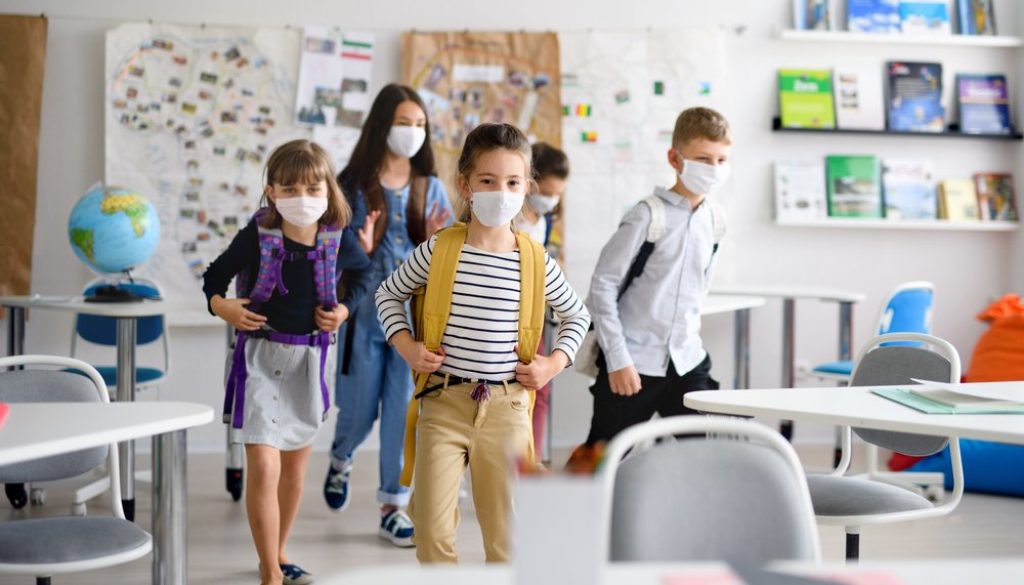4 Nice Ways to Welcome Students Back to School Virtually or In-Person
K-12 schools around the country are welcoming students back to the classroom after the Easter break, but not all are welcoming students back to brick-and-mortar classrooms. Millions of students will continue to be taught virtually during the summer semester depending on factors such as local infection rates, school district risk assessments, state orders, and parental concerns.
This time last year, nearly all schools switched from in-person learning to virtual lessons to help prevent the spread of the COVID-19 virus. This time this year, despite a surge in COVID-19 cases in some parts of the country prompting concerns over a fourth wave, more schools are offering full-time in-person learning or a hybrid mixture of in-person learning and virtual lessons.
However, the situation is subject to change as rates of infection can change quickly; and it is likely that in some locations, schools welcoming students back to brick-and-mortar classrooms at the start of the semester may be welcoming them back to full-time virtual lessons before the summer vacation. So, how is the best way to welcome back to school in a fluid environment?
CDC Advice for Reopening Schools during the Pandemic
As more has become known about how the COVID-19 virus spreads, the Centers for Disease Control and Prevention (CDC) has frequently updated advice about reopening schools during the pandemic. The most recent update suggests a three-tiered operational strategy supported by COVID-19 testing and vaccinations for teachers. The three-tiered operational strategy is:
- Consistent implementation of layered prevention strategies to reduce SARS-CoV-2 transmission in schools.
- Consideration of indicators of community transmission to reflect levels of community risk.
- Phased prevention strategies based on levels of community transmission.
The layered prevention strategies mentioned in #1 are those mostly likely to affect students as they prioritize mask wearing and physical distancing supported by frequent hand washing, cleaning, and contact tracing. Although many students will have already experienced some of these prevention strategies, those returning to brick-and-mortar classrooms for the first time may be disconcerted by the changes enforced by the pandemic.
Therefore, to make students feel as welcome as possible in the “new normal” of brick-and-mortar classrooms, our first nice way to welcome students back to school in-person is to issue school-branded masks in a class-specific color. This will not only help prevent inequalities in mask apparel but also help better organize students during events such as school drills.
Planning Drills and Getting Students Back to Doing Drills
The CDC’s physical distancing guidelines have made organizing and conducting drills more difficult than before. Nonetheless, school drills are just as important as prior to the COVID-19 pandemic, as events such as fires, active assailants, and medical emergencies are just as likely now as they ever were – if not more so due to the emotional impact of the pandemic on students.
Planning drills for getting students back to doing drills follows much the same procedures as before – starting with tabletop exercises so teachers know exactly what to do when they lead students during full-scale drills. Tabletop exercises also provide the opportunity to work out how physical distancing guidelines can be maintained and how to accommodate students with disabilities or special needs.
Full-scale drills should be scheduled for various times of the day so students know how to react in different scenarios (i.e., in the classroom, in hallways traveling to their next class, in the library, or in the cafeteria) and the drills should be monitored to identify what elements of the drill need to be improved upon. You can find more advice about planning drills and getting students back to doing drills in our Guide to Running School Safety Drills.
What about Students Learning Remotely or Under a Hybrid Model?
Further challenges exist with regards to drills when it comes to students learning remotely or under a hybrid model. Naturally, students learning remotely will be unable to physically participate in school drills, but they should still be kept informed of what changes have been made to drill procedures so they are not left behind when they return to in-person lessons.
Most school hybrid have students attending in-person lessons on alternate days to better facilitate physical distancing guidelines, and it may be necessary to double or triple the number of drills each term so that every student gains experience of drill procedures. If additional drills are not conducted, it is likely fewer students will be aware of the procedures in a real-life emergency.
Teachers and other school employees also need to be kept up-to-date with changing drill procedures; and, if teachers are absent from the brick-and-mortar environment due to illness, self-isolating, or conducting remote lessons from home, additional drills need to be conducted when they return to the brick-and-mortar environment. This is especially important if the teacher or school employee has responsibility for leading a class to safety during an emergency.
Welcoming Students “Back” to Remote Learning
While most students have experienced remote learning over the past twelve months, there are likely to be occasions over the next twelve months when a return to remote learning is necessary. We have already discussed one way in which schools can welcome students back to in-person lessons, and to help students return to a remote learning environment, schools can:
- Release a video from school administrators and teachers explaining how virtual lessons will resume, how students can connect with classmates virtually, and how they can access additional help if required.
- If the return to remote learning coincides with the start of a new semester, teachers can use icebreakers – such as asking students to share something they did over the vacation – to get students comfortable with speaking up and interacting with the technology and each other.
- Creating “welcome back to remote learning” packages with pencils, textbooks, and other small school items could be a great way to connect with students and help them get reaccustomed to a digital learning environment.





